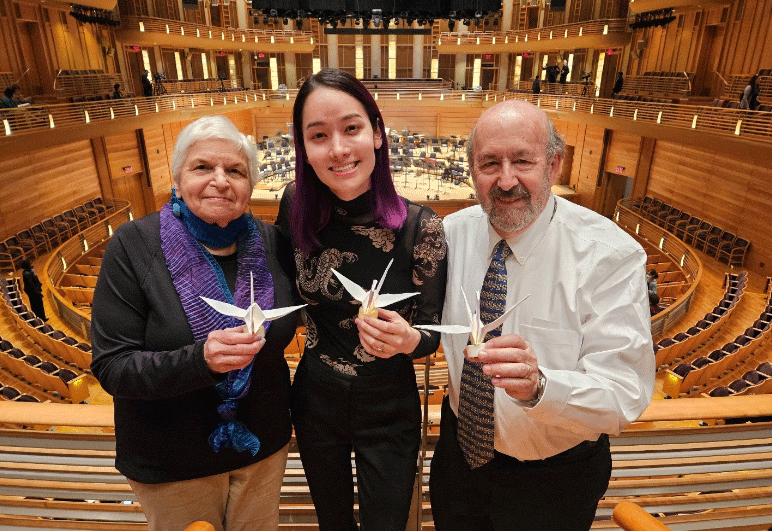The serendipitous partnership between MCYO and composer Jordan Jinosko.
By Rudy Malcom
When Kristofer Sanz, artistic director of Strathmore’s Maryland Classic Youth Orchestras (MCYO), stumbled across a video of composer Jordan Jinosko’s Three Sketches of Unblemished Earth in a Facebook group, he was enthralled. A reminder of the stakes of the climate crisis, the piece was something Sanz wanted to program and share with the Strathmore community. So he reached out to Jinosko.
“To this day I think it’s still the most beautifully written professional email that I’ve ever received,” Jinosko says. “That set the tone for our friendship, which developed into this beautifully collaborative relationship.”
In December 2022, MCYO’s flagship orchestra, the Philharmonic, performed the world premiere of Three Sketches of Unblemished Earth under the baton of Sanz. Before the concert, Jinosko, 29, and Sanz met for brunch. Within 10 minutes, Sanz said he knew they “spoke the same language musically,” and he was eager to cultivate Strathmore’s relationship with her.
Fortuitously, after the concert, Strathmore donors Edward Grossman and his wife, Rochelle Stanfeld, were also enthusiastic about a future partnership between MCYO and Jinosko. With the couple’s generous support, Sanz commissioned the composer to write Tales from the Aviary, which the Philharmonic performed the following March.
“It truly was a collaborative commission, which you don’t get a lot of in the orchestral world,” Sanz says. “It’s typically just people sending money, getting a piece of music, and playing it.”
Instead, Sanz and Jinosko worked closely, sharing their visions and ideas—a style that Jinosko describes as “limitless.” She notes how Sanz “pushed and pulled the tempo in a way that was so expressive” in the second movement of her composition.
Jinosko also praises Strathmore’s commitment to diversity. In the past, she had been denied professional opportunities due to fears that her transgender identity would cause protests. However, she felt welcomed and celebrated at Strathmore, allowing her to be real and vulnerable while working on the commission.
Noting the challenges emerging artists face trying to break into the orchestral scene, Jinosko says, “The way that Kristofer was willing to take a risk with my music—not only programming my music . . . but also commissioning another piece for me—has led to so many opportunities in my career that I can’t even quantify.”
But Sanz never saw it as a risk. For him, it was simply the beauty of her music that resulted in a harmonious partnership.


